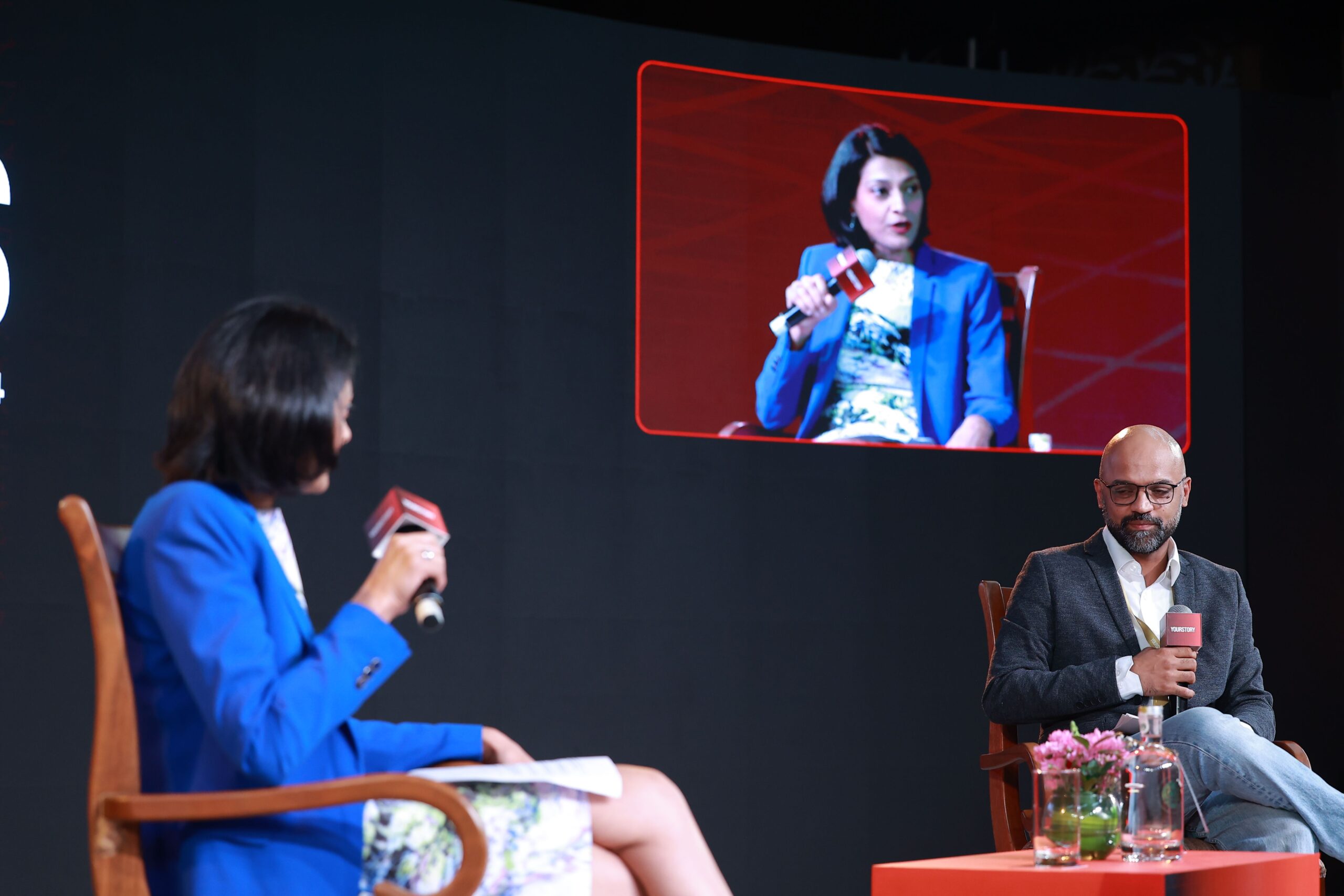From the rise of digital wallets and real-time payments to the integration of AI-driven solutions, the way businesses and consumers handle transactions is changing at an unprecedented pace. These innovations are not only enhancing convenience and security but are also redefining the customer experience across global markets. As the future of retail payments takes shape, the convergence of fintech and AI is emerging as a pivotal force that promises to make transactions faster, more seamless, and secure.
At TechSparks 2024, this topic took centre stage during a fireside chat between Ankit Jhingran, Director of Engineering at JCPenney India, and Shivani Muthanna, Director of Strategic Partnerships and Content at YourStory.
The discussion, titled ‘Reimagining the future of retail payments: Innovations shaping tomorrow’. explored the game-changing impact of digital wallets, real-time payments, and AI-driven checkouts on the retail industry.
Jhingran started by giving insight into the role of JCPenney India, highlighting the value India brings to the company as a Global Capability Center (GCC). “GCCs have been in India for more than a couple of decades now. JCPenney, being an American retailer, benefits immensely from being in India, where we deliver end-to-end solutions, from conceptualisation to launching features in production. The immense tech talent pool here allows us to continuously innovate and add value to the multinational business,” he explained.
Frictionless Payments and Enhanced Security
One of the primary trends discussed during the session was the rise of frictionless payments—designed to streamline transactions and enhance security for consumers. Ankit Jhingran explained how JCPenney has embraced this model for years. “Coincidentally, JCPenney has always had frictionless payments. When it comes to our digital channels, maybe except for one or two payment types, we’ve maintained a seamless experience,” he shared.
He went on to elaborate on what frictionless payment means in practice: “Frictionless payment is where you do not leave the portal. You make the payment, and the processing happens then and there. This adds to the security, giving customers the sense that their payment is safe.” This approach, according to Jhingran, aligns with JCPenney’s overarching philosophy: “Every single solution we design follows a very simple philosophy—customer first, security is part of that. We do not look at payment and security as two different things. Security is not an add-on; it’s a feature of payments.”
By embedding security directly into their payment systems, JCPenney ensures that customers feel confident in their transactions, reinforcing trust in the brand. “The frictionless payment just adds to the entire payment offering that we have,” Ankit added, emphasizing the seamless, secure experience JCPenney aims to deliver.
Wearables in payment solutions
Ankit further elaborated on the growing trend of wearable payments and biometric authentication, areas poised to drive the future of retail transactions. “Wearable payments, I hear, are projected to be a $200 billion industry in the next decade. Biometric solutions like iris scans, facial recognition, and fingerprint scans are pretty safe. And as things evolve, security standards around these will also improve significantly.”
He provided a lighthearted example of how fast technology adoption has progressed: “There was a social media post that went viral about an auto rickshaw driver in Bangalore offering his smartwatch to the customer for payment. That’s where we’ve come today.”
Wearable payments represent a burgeoning industry, with Ankit pointing out that “Wearable payments by itself, I hear, is a $200 billion industry in the next decade, right? So, there are a lot of opportunities here.” He also emphasised the advancements made in India, which have embraced wearable payments and QR codes. “Countries like India have shown what wearable payments and QR codes can do. The world has a lesson to take from us.“
He also discussed potential future innovations, stating that the next big step could be making QR code payments available offline, thereby enhancing accessibility in areas with poor network connectivity.
The rise of Buy Now, Pay Later (BNPL)
Another fintech trend making waves in retail is the ‘Buy Now, Pay Later’ (BNPL) model. Initially viewed skeptically, Ankit admitted, “When BNPL was launched a few years ago, I saw it as nothing more than a glorified personal loan. I’m glad to be proven wrong.” He went on to explain that BNPL has evolved into a legitimate alternative to credit cards, offering customers more flexibility with fewer fees. JCPenney has embraced this trend, recently launching its own BNPL feature.
Ankit shared his vision for the future of BNPL, suggesting that AI could further personalize the payment experience: “AI could integrate into a customer’s profile to offer more tailored options. For example, if someone frequently buys jewellery, they could be prompted to use BNPL, making the purchase experience smoother and more intuitive.”
The conversation also touched upon real-time payments, a key innovation that has reshaped the payments landscape. In India, platforms like UPI have led the charge, and Jhingran believes other global markets will soon follow. “India’s UPI infrastructure is a great example for the world to follow. Real-time payments give retailers instant access to funds and reduce operational costs.”
He highlighted the benefits of real-time payments for retailers: “It eliminates the need for batch processing, which involves higher costs and system utilisation. Real-time payments not only make transactions faster but also reduce a company’s overall operational expenses.”
AI-driven checkouts and the future of retail
The future of retail, according to Jhingran, is being shaped by AI-driven checkouts. These technologies use AI to create highly personalised, seamless payment experiences that minimise human intervention. He noted the potential for AI to revolutionise checkout systems across the retail sector, making them more efficient and customer-friendly.
With advancements like frictionless payments, wearable tech, and AI-driven checkouts, the retail sector is on the brink of a transformation that promises faster, more secure, and more convenient transactions for consumers and businesses alike. As Jhingran aptly put it, “Security is not an add-on to payments. It’s a core feature, and it’s what will continue to drive the future of retail payments.”






![Read more about the article [Funding alert] Tech platform Zoko raises $1.4M in seed round from Y Combinator, Binny Bansal’s family office,](https://blog.digitalsevaa.com/wp-content/uploads/2021/03/Untitleddesign2-1617178195226-300x150.png)



![Read more about the article [Weekly funding roundup Jan 13-19] Venture capital inflow remains steady](https://blog.digitalsevaa.com/wp-content/uploads/2023/10/funding-lead-image-1669386008401-300x150.jpg)